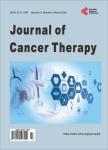Prospective Assessment of Catheter Migration in Implanted Vascular Access Devices for Adjuvant Colorectal Cancer Chemotherapy
导管移位,植入式血管接入设备,辅助大肠癌化疗的前瞻性评估作者机构:Department of OncologyHelsinki University Central Hospital and University of HelsinkiHelsinkiFinland Department of AnaesthesiologyHelsinki University Central HospitalJorvi HospitalEspooFinland Department of RadiologyHelsinki University Central HospitalHelsinkiFinland Department of AnaesthesiaTampere University Hospital and University of TampereTampereFinland.
出 版 物:《Journal of Cancer Therapy》 (癌症治疗(英文))
年 卷 期:2012年第3卷第6期
页 面:920-925页
学科分类:1002[医学-临床医学] 100214[医学-肿瘤学] 10[医学]
主 题:Central Venous Catheterization Catheter Migration Complication Colorectal Cancer Vascular Access Device
摘 要:Background: Chemotherapy in colorectal cancer is usually administered as continuous infusion of 5-fluorouracil, often in combination with oxaliplatin or irinotecan. Targeted drugs are most efficient and tolerable in conjunction with continuous infusion dosing. Implanted venous access devices (VAD) are the prerequisite for continuous infusion administration. The reported catheter migration frequency with VAD is 0% - 3.5%. The purpose of this case-control study was to evaluate the predisposing factors of catheter migration. Methods: We inserted VADs in 88 radically operated colorectal cancer patients randomized to adjuvant 48-hour-infusion chemotherapy repeated every 14 days, altogether 12 times over 24 weeks. Three out of 88 patients (3.4%) had a symptomatic catheter migration from the superior caval vein into the internal jugular vein. The fourth case had chemotherapy for osteosarcoma. These 4 cases were compared with 12 controls from the same 88 patient study population, matched for age, sex, body mass index (BMI), physical activity level and right subclavian insertion site. Tip position, port model, complications, catheter length and material was studied. The post insertion catheter tip position in the chest X-ray was numbered from 1 (in subclavia) to 8 (in atrium). Results: The four cases, all male, had a median position of 3 (range 3 - 4) and controls 6 (range 4 - 8), P = 0.004, median difference 3 (CI95% 1 - 5). At notification of migration the patients had experienced discomfort in the neck region starting 5 to15 days before at strenuous upper extremities activity with Valsalva maneuvers. Conclusion: Optimal catheter tip position when sitting is in the right atrium or low in the superior vena cava to avoid migration. Patients with VADs should avoid strenuous activity with Valsalva maneuvers.



